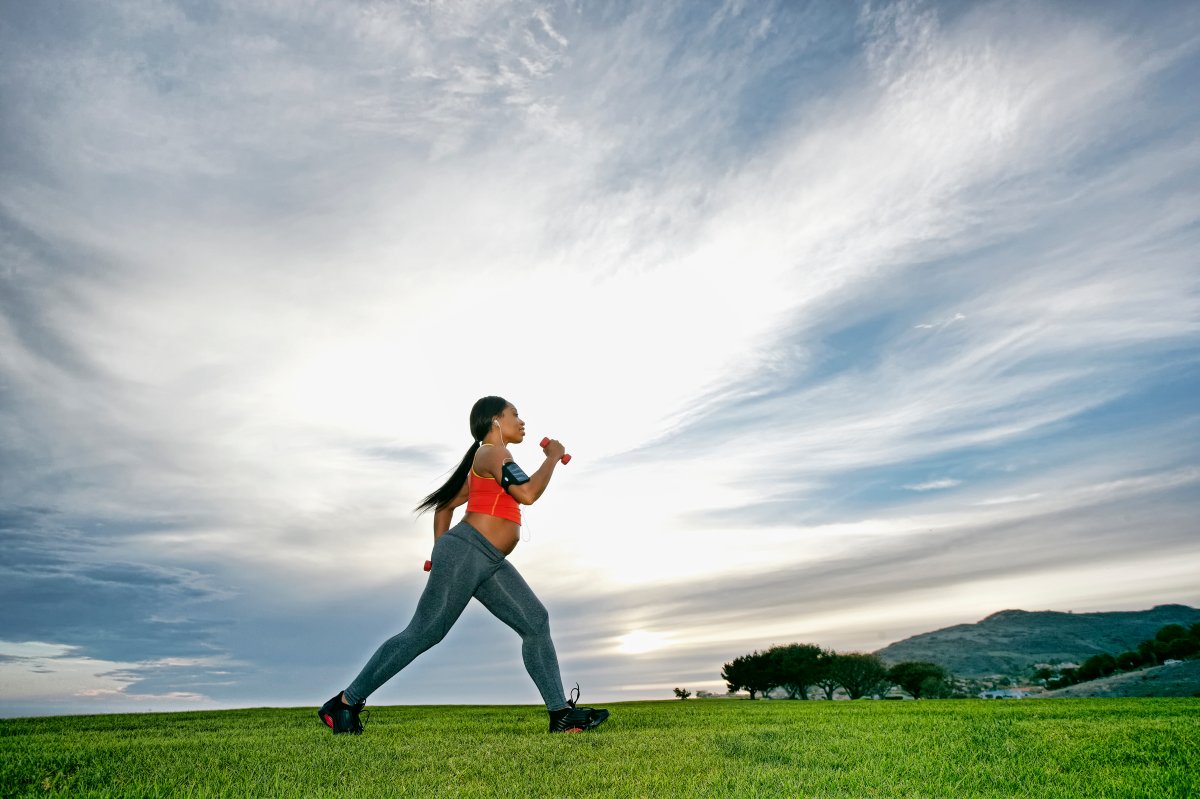After a woman gives birth in Canada, she’s usually provided with plenty of advice and guidance from her doctor, nurse or even midwife about things like infant care, breastfeeding and crib safety.

But one thing new moms aren’t always told about is the critical importance of keeping physically active, how to do it without injuring themselves, or even the best way to exercise with a newborn in tow.
WATCH: Mom shares dramatic postpartum picture to show reality of childbirth

Sarah Liva, a recent PhD nursing graduate at the University of British Columbia, said she encountered this knowledge-gap first-hand while conducting interviews with 30 new moms from B.C.’s Lower Mainland. And it wasn’t just the women who were at a loss.
“One of the things that comes up often is women talk about exercise and we [nurses] just don’t have the education, or anything to really say to them,” Liva told Global News.
“So we kind of just say, ‘See your physician.’ So I had women asking me that, and I had no answer.”
National data suggest that women with infant children have some of the lowest rates of physical activity of any demographic group, and that the reductions in the time spent exercising persist past the baby’s first year. Liva wanted to understand why.
READ MORE: Should new parents unplug for the first 30 days? Experts say yes
She found that the women she interviewed were mostly experiencing the same sorts of barriers, like lack of time, frustration, and limited childcare options.
“But it was the women who had different perceptions about how important activity was for them to meet their needs — the degree to which they thought, ‘Hey, being active helps me, makes me feel good as a mom’ — those people, despite all the things that were happening, they were able to negotiate and get activity because it was so important to them.”
Perception, it seemed, was everything.
Liva also said she heard over and over that women were struggling with the physical changes they were experiencing, and with nobody to guide them, they were left adrift trying to build their workouts.
“They would go and try and do things that they used to be able to do, and they felt unfit, they felt like embarrassed that they couldn’t do the stuff that they used to be able to do. And some of them get injured … and they were miserable because they love the activity.”
Benefits of postnatal sweat sessions
Experts agree that exercise remains one of the most effective ways of minimizing the risk of complications (physical and psychological) during pregnancy, but it also helps women to stay healthy and happy after birth, explained Dr. Karen Fleming of Toronto’s Sunnybrook Hospital.
“There’s a lot of stuff that goes with kids,” said Fleming, who serves as a division lead for family medicine obstetrics at Sunnybrook and has studied exercise in pregnancy among both sedentary women and elite athletes.
“You’re lifting the car seat, you’re lifting the bags, you’re having to do a lot more physical activity. Having a strong core and being more fit is going to help you meet those demands.”
READ MORE: 5 moms on the realities of breastfeeding
Regular physical activity can help with sleep and postpartum depression as well, she noted, and contrary to what some moms fear, it won’t affect the quantity or quality of breast milk. But things like pelvic organ prolapse (a fairly common occurrence among women who have given birth) can definitely present a challenge.
Fleming said she is currently involved in a wide-ranging effort to update the guidelines surrounding maternal health and exercise in Canada, which is expected to be completed this year.
“We know from the literature that, not just in pregnancy, many physicians with competing time [demands] may not be talking about exercise, so we’re trying to raise awareness within our teams and with our residents to change that,” she explained.
WATCH: Ontario mothers share experiences with Strep A postpartum

Someone who is relatively inactive will need different counselling than someone who was a high-level athlete, Fleming acknowledged.
Doctors, nurses, midwives and patients in Canada all have access to a tool called the PARmed-X for Pregnancy, she said, which helps determine the best frequency, intensity, target heart-rate and type of exercise for each mom. If nothing else, it can serve as a jumping-off point for a conversation between women and their health-care providers.
Setting your own pace
At UBC, Liva said she was surprised to find that most of the new moms she spoke to for her research weren’t focused on their weight. What she did learn was that they wanted to be able to dictate their own progress and pace rather than having goals imposed on them.
“We often push that kind of message that you need to get this much exercise,” she said. “Let’s just ask people what they want to do, and help toward what they want to do.”
READ MORE: Photographer documents couple’s pregnancy from day one until birth
As part of her ongoing research, Liva said she’ll be focusing more on health-care providers, who are admittedly under a time crunch.
- Train goes up in flames while rolling through London, Ont. Here’s what we know
- Budget 2024 failed to spark ‘political reboot’ for Liberals, polling suggests
- Wrong remains sent to ‘exhausted’ Canadian family after death on Cuba vacation
- Peel police chief met Sri Lankan officer a court says ‘participated’ in torture




Comments